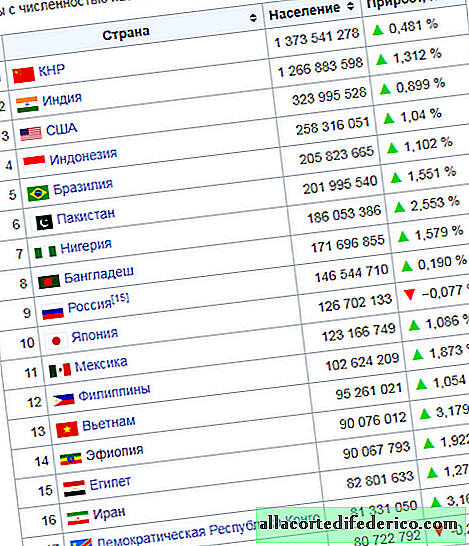How many of us: online planet population meter
Today, more than 7.5 billion people live on Earth, while 2.7 billion are citizens of only two countries - India and China. The demographic picture of the world is much more interesting than just dry numbers reflecting the number of people. It includes information on the national composition, age structure, migration processes, age parameters of the inhabitants of our planet.

More recently, at the beginning of the 20th century, the world's population was about 1.6 billion people. After only 60 years, the world celebrated the birth of a 3 billionth inhabitant of the Earth. And since the mid-1960s, world leaders have seriously become preoccupied with the problem of overpopulation, and the planet’s population has grown so quickly. According to experts, the number of inhabitants of the globe by the end of the XXI century will surpass the line of 11 billion.
 African children
African childrenBut population growth is far from being observed in all parts of the planet. Over the past 20-30 years, the regions with rapidly increasing rates include countries in Southeast Asia and Africa, such as India, China, Indonesia, Nigeria, Bangladesh, Ethiopia, Pakistan, Egypt, Congo, Thailand, and the Philippines. Slightly less, but also stable growth, is observed in the countries of America: Brazil, Mexico, Colombia, Argentina.
 This is what most trains in India look like.
This is what most trains in India look like.Despite the fact that today the population of India is smaller than in China (1.348 billion Indians and 1.412 Chinese), scientists predict that by 2020, India will occupy first place in the world in this indicator. This is partly due to the fact that in China for a long time there were measures to limit the birth rate. But today, due to a sharp decrease in the share of children and youth in Chinese society, the country's leadership decided to lift these bans.
 China
ChinaBut the indigenous population of Europe, on the contrary, is rapidly decreasing, which is associated with the demographic aging of the population. This process leads to an increase in the proportion of older people compared to children and youth. A similar problem is familiar to most developed countries in the world. In addition to Europe, a similar process is observed in Australia, Canada, the USA and Japan. This situation is partly smoothed out by the stable number of labor migrants arriving in the developed countries of the world. Unfortunately, Russia is no exception, and in our country there is also a large number of elderly people in comparison with the able-bodied population.
 In Japan, the elderly are very active.
In Japan, the elderly are very active.At the initiative of American researchers, an information project was created called Worldometers, which collected demographic and some other parameters for different countries of the world. Of course, the data displayed here is often obtained by modeling and forecasting, but in any case it is very interesting. We offer to see how fast the population of the Earth is growing in real time.
The material is copyrighted, when copying a link to an article or travelask.ru site is required

















